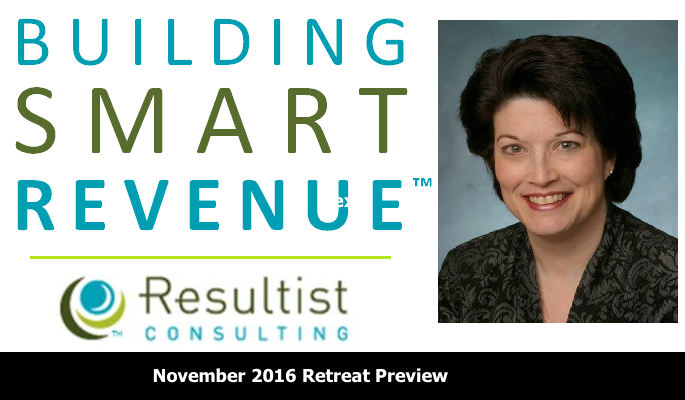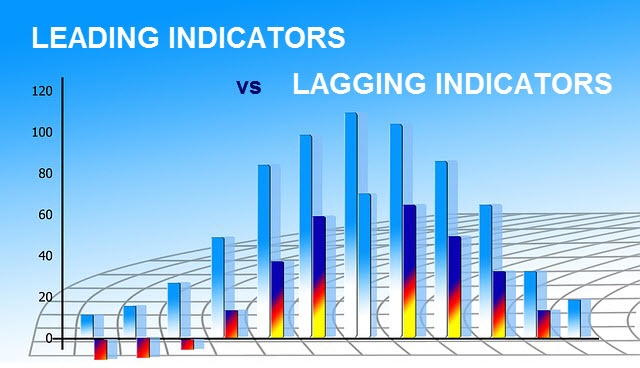
In November, Elizabeth Harris of Resultist Consulting will facilitate our CEO Best Practices Round Table as a follow-up to her October CEO Tools Workshop. By way of getting us ready for ‘digging in deeper’ to the topic of “Building SMART Revenue™” she has researched Leading vs Lagging indicators for us. In October, as she explained the importance of identifying the 3-5 Critical Factors to Report On, and their “Indicator Type”, it occurred to her that not everyone feels comfortable with the distinctions and use of these meaningful measurements. She’s broken it down for us here:
By Elizabeth Harris, Excell’s October/November presenter

“In strategic planning it is important to discuss key performance indicators (KPI). … The first step to determining your KPI is to understand the difference between lagging and leading indicators. The second step is to define and monitor your business indicators. Lagging and Leading Indicators.” – May 27, 2014 – Project Times
Both leading and lagging indicators can occur at approximately the same time and there are circumstances where the leading and lagging indicators may not be easily identified. Today we will review definitions, examples and how to recognize the differences. By doing so, we hope to help you improve Key Performance Indicators (KPIs) to make better decisions.
Definitions:
Indicator:
An indicator is anything that can be used to predict future financial or economic trends.
Leading Indicator:
These types of indicators signal future events. Leading indicators are measures that lead to the performance of lag measures; normally measuring intermediate processes and activities. Often you will hear “what drives results?” when talking about leading indicators.
Leading Indicator Examples:
- Amount of sales in the pipeline at 90%
- Customer complaints three-month trend
- Number of leads created
- Contracts in negotiation for Q3
- Average handle time
- Number of leads converted to opportunities
- Customer cases currently open
- Team closing ratio
- Average speed of answer
- Number of contacts
Leading indicators may prove difficult to identify and capture. With new measures there is no history within the organization. Attention to leading indicators are an advantage since they are predictive in nature and allows an organization to make adjustments based on results.
Lagging Indicator:
A lagging indicator is one that follows an event. Lagging indicators focus on results at the end of a time period, normally characterizing historical performance. Lagging indicators can also be referred to as Key Results Indicator (KRI)
Lagging Indicator Examples:
- Last month’s P&L statement
- Q2 Revenue review
- Total problems
- # of units sold
- Call center calls completed within two minutes
- Total incidents
- # of different products sold
- Product returns in July
- Total customer contacts
One of the advantages of lagging indicators is how easy they are to identify and capture. This often has teams focused primarily on these KRIs which are only one piece of the puzzle. Lagging indicators are historical in nature and do not reflect current activities. These measures lack predictive power.
Caution:
Quotas or goals should only be placed on lagging indicators, not on leading indicators. Placing a goal on a leading indicator may result in gaming the system which can generate the wrong results.
Conversations about leading and lagging indicators may get slightly confusing as other terms, phrases and special lingo may be used. For example, when talking about leading indicators, many will refer to “performance indicators” and lagging indicators may be referred to as Key Results Indicators (KRIs).
Goals and Compensation:
It goes without saying that goals and incentives drive behaviors. Consider how you want to influence those desired behaviors. Develop processes, metrics which help to measure success and compensation to keep motivations aligned with goals.
Don’t leave out the support analysis team. Develop a list of behaviors you hope to see from them as well. If you identify and document the desired behavior, it becomes the basis for future behavior.
When choosing the right sales performance analytics to focus on and help their organizations grow, sales managers typically face the dilemma of focusing on lagging or leading indicators.
Lagging indicators are typically “output” oriented, easy to measure but hard to improve or influence, while leading indicators are typically input oriented, hard to measure and easier to influence.
Sales leaders ask a questions such as: “Which KPIs do I want my team focused on that will best correlate to sales success?”
If you focus primarily on lagging indicators, they may in fact be detrimental to success. Leading indicators can become a secret formula for improving sales productivity. If a sales team works together to discover which indicator(s) are most valuable as a core sales KPI, there is “buy-in”. This will increase the sales team’s ownership of their performance and offer better accountability at all levels. Leading indicators focus on the likelihood of achieving goals and what might occur in the future, serving as a predictor or a warning sign.
The combination of leading and lagging indicators offers a bigger picture view of the operation. It also gives you a comprehensive look at your risk, and allows you to make changes to improve scenarios before lagging indicators come into effect.
While both types of sales metrics are critical for any sales organization to track, the best companies study more leading sales metrics than lagging.
About Elizabeth Harris of Resultist Consulting
Elizabeth is the founder and CEO of Resultist Consulting. She specializes in growth initiatives, working with small and mid-sized businesses to organize their sales and revenue processes to make them predictable and profitable.
Elizabeth has more than 20 years of experience as a proven driver of revenue, profitability and accountability; adept at improving businesses in competitive and changing market conditions. She is a complex B2B sales expert; skilled at leading and managing sales teams. Resultist is her fifth business. She grew one of her previous businesses from $4M to $16M in annual revenues in 3 ½ years.
Please keep up with all the Excell news by following us on our social networks. We post often and would like to connect with you there, too!

